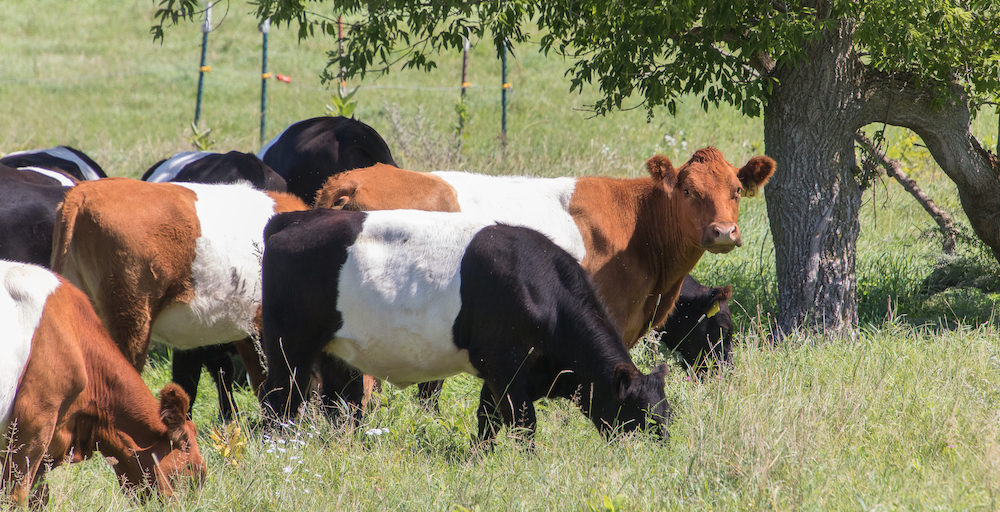Sometimes we stand together quietly – me and the cows. The air is still and filled with green smells: grass, hay, leaves, fresh herbs. I lean against the metal gate and watch as some stroll from one patch of fresh grass to the next, others recline and chew their cud, and calves run in what looks like a game of tag.
It’s what grass-fed/grass-finished cows do every day, every growing season.
It’s late summer, time for harvest. On Thursday, Dave and I loaded two beefy steers (altered males) into our “new” cattle trailer. It’s an investment we made this spring so that we could transport our cattle as calmly and humanely as possible.
Dave discovered it along-side a back road. “For Sale” the sign read. When we pulled over to take a look, we immediately saw the bashed-in back end. An auto accident, said the owner when she came outside to chat with us. Yup, a section of the frame was bent and the back sliding door was crumpled and pulled off the runners. A mess. But was it a salvageable mess?
Dave had a friend – a master welder – take a look and estimate the repair cost. Based on that, we purchased the trailer and set about to repair and paint it. It still looks used – the dents are easy to see – but it works really well.
It was about 6:30 in the morning, and the sky was heavy when we walked to the barn and loaded the cattle into the steel trailer. It took no more than 10 minutes. We then drove 30-miles to our USDA-licensed, family-owned custom meat processor in nearby Woodville, WI.
After a life on open pastures, in full sunshine, in the company of their herd, our beeves traveled 30 miles. They were spared growth hormones, sub-therapeutic antibiotics, months in crowded feedlots, and a final drive of up to 1,000+ miles to a massive processing plant.
I won’t kid you: raising 100% grass-fed beef isn’t easy, and it isn’t without physical and financial costs. There’re weekly fence repair, annual fence replacement, improvements to the handling facility, and building better water systems. Two years of drought were followed by this year’s deluge. Both conditions – dry and drowned – ruined large portions of the hay we’d hoped to store for winter feeding. This roller-coaster weather also drove hay prices up from $35/bale to over $65-100/bale.
This is farming. Hard and often unpredictable. Yet, Dave and I remain committed to grazing our beef cattle (and not feeding grains or corn) because grass is what cattle are designed to digest. Grazing is healthful to the herd, restores soil and protects groundwater, produces beef of high nutritional value, and contributes to the economy and vibrancy of our local community.
As a girl growing up in the Bronx, I never would have imagined that I’d care a wit about a beat-up cattle trailer. But that 12-year-old who volunteered at the ASPCA and the cattle woman I am today share a basic value – the wellbeing of the animals put into our care.


